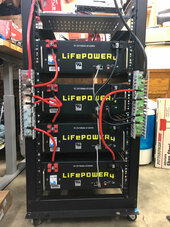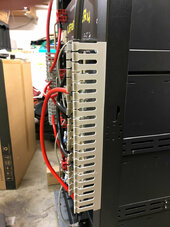I almost have a complete battery rack build and a few questions surfaced that I haven't been able to resolve completely based on my searches here, especially since this is my first experience with a bus bar. Any help or guidance would be greatly appreciated to ensure this is safely constructed! My questions are below:
- For diagonal configuration of a bus bar, is it just the physical order of attachment that matter? For instance, in the attached "bus-bar-diagonal-configuration" image, I wanted to have my final cable to connect at the top (for ease of connecting to the 6000XP), so for my negative side, I just reversed the order of cables when connecting it to the bus bar (please note, that red cable on right will be swapped with black when it comes in). I assume this approach should work, but would love to confirm with the experts here.
- On the bus bar mounting, I purchased this from Signature Solar (600A 12 stub busbar) and it actually came with mounting brackets that might have been aluminum. To mount this a bit easier to my server rack, I decided to remove the brackets and just mount it directly on the server rack itself (see attached "bus-bar-mounting" image). My big question here is... is this safe? I don't fully understand what is needed for a safe bus bar mount considering a lot of the other smaller bus bars appear to be mounted with plastic (ie, is there any logic that you need to have something non-conductive between the bus bar at the rack?)





